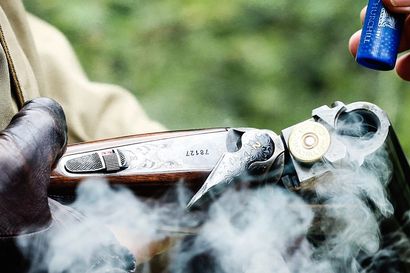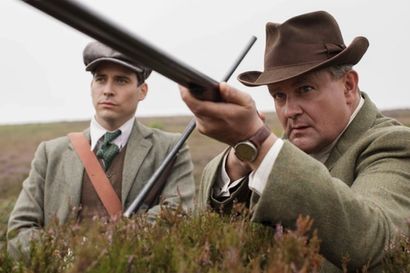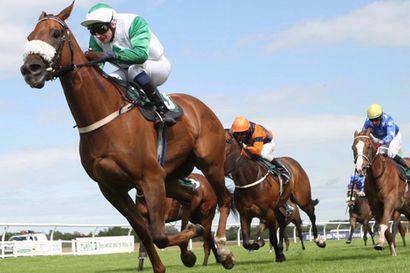These are the five finest fishing rivers in Scotland
Adored by anglers the world over, this rugged, handsome waterways give rise to some of the finest sport in the known world
If Finland is the Land of a Thousand Lakes, and Rwanda is the Land of a Thousand Hills, then Scotland may well be the Land of a Thousand Rivers. (Well, 400-or-so at least.) Because the Highland reaches of our fair isle are criss-crossed by a sparkling array of waterways, and our Calendonian cup runneth over. The fish (Atlantic salmon and brown trout, chiefly) love them. And so the sports fishermen do, too. It feels foolish to curtail any curation of wonderful waterways in this neck of the woods, like picking one’s ice-cream flavour. (We’ll just take them all). Nevertheless, we now present, for the very first time, the Gentleman’s Journal Semi-Official Selection of Scotland’s Finest Fishing Rivers (of GJSOSSFFR, for short.)

River Don
Rising through the rugged Grampians and flowing gracefully eastwards, The Don is well known as a pastoral, picturesque salmon river, with an equally good reputation for fine sea trout. But it makes our top five, however, due to its wild brown trout, which congregate around its rapid-winding streamy runs and clear, rocky pools. Among the slower, deeper reaches of the Don, the trout rise lazily in the evening thanks to the healthy fly life at the surface — and in April and May especially, the heftier specimen abound.
When to go: April and May is the received wisdom, though June and July can be fruitful times very early in the morning.
What will it cost? Day-fishing permits for brown troyr tend to be around £15; salmon/ trout permits go for between £15 and £30.
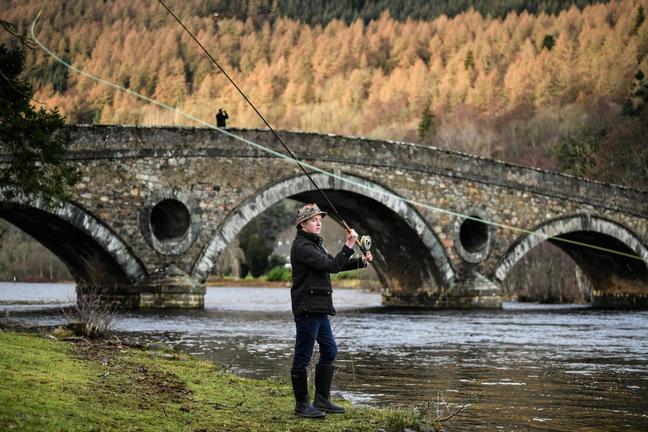
River Tay
Scotland’s longest river (At 117 miles) is also one of its handsomest. Starting on the craggy slopes of Ben Lui, the Tay flows down through the Highlands, kissing Loch Dochart, Loch Iubhair and Loch Tay on the way, before reaching the sea just south of Dundee. It’s near here, just before the Firth of Tay on the lowest ten miles of the river, that the local fisherman ply their trade. This stretch is world famous for its huge, healthy fish — and it was here, in 1922, that the largest ever rod-caught salmon in Britain was landed, by one Georgina Ballantine. It weighed 64 pounds, though in more recent years catches of up to 45 pounds have been reported.
When to go: March sees spring salmon appear in great numbers, thanks to slightly increased water temperatures. The autumn months, from August onward, sees large numbers of salmon starting to build up in the lower Tay, with 20-catch days being reported of late.
What will it cost: About £10 a day.

The River Dee
One of Scotland’s most storied and powerful rivers, the Dee takes its name from the land it passes through — Royal Deeside. They area was so beloved by Queen Victoria that she decided to build the Royal Family’s Highland Pile up here: Balmoral Castle. The current cohort regularly fish the banks of the river itself, which originalets in the cairngorms and flows ruggedly through southern Aberdeenshire into the North Sea at Aberdeen. One of the country’s shallower waterways, it is known for beautifully clear water, rocky, rapid streams, and exquisite salmon pools which entice some of the world’s most dedicated fly fishers.
When to go: September
What will it cost: About £15 a day
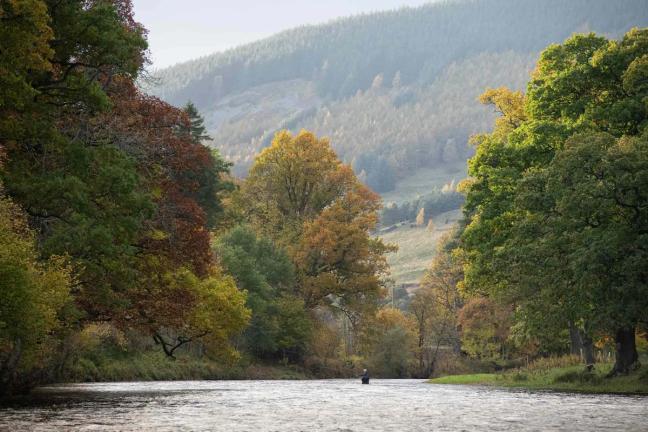
River Tweed
Perhaps the finest salmon rivers in the world, the Tweed flows through the bucolic Borders landscape over 97 pretty miles, eventually reaching the sea just south of the border at Berwick. More rod-caught salmon are landed here than anywhere else in Europe — in particular at Junction pool, one of Scotland’s most prestigious and notable fishing spots. (And it’s priced to match, at a healthy £1,400 per angler per day during peak season.) Predominantly a fly fishing river, the Tweed benefits from traditional lowland terrain, with verdant banks that border deep fishing pools and picturesque meanders.
When to go: September to November is when the world famous Atlantic Salmon run tends to happen, attracting fly fishers from around the world.
What will it cost: In peak season? Could be north of a grand.
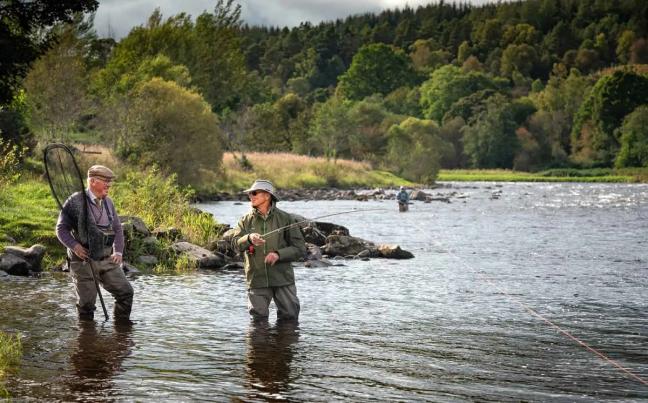
River Spey
You know a river’s good for fishing when it gives its name to its own casting technique. The Spey Cast is a traditional method that sees an angler make long, impressive casts without much room for a proper backswing, so to speak. Originating in the Highland grandeur of Loch Spey, the river rushes through Kingussie and Loch Insh before finishing in the sea at the Moray Firth. Its waters are so prized that they give rise to an internationally adored variety of whisky — Speyside — and the river itself is dotted with distilleries and grand homes. A strictly fly fishing river, The Spey boasts about 30 globally salmon beats, carefully looked after by the region’s professional ghillies. Fast-flowing across gravel riverbeds and studded with healthy pools, it is known as a bucket-list fishing destination with good reason.
When to go: August and September
What will it cost? From around £30 a day for a private beat with a ghillie in low season, to north of £300 for the same at the most lucrative times.
Read next: Inside The Fife Arms, our favourite Braemar bolthole

Become a Gentleman’s Journal Member?
Like the Gentleman’s Journal? Why not join the Clubhouse, a special kind of private club where members receive offers and experiences from hand-picked, premium brands. You will also receive invites to exclusive events, the quarterly print magazine delivered directly to your door and your own membership card.
